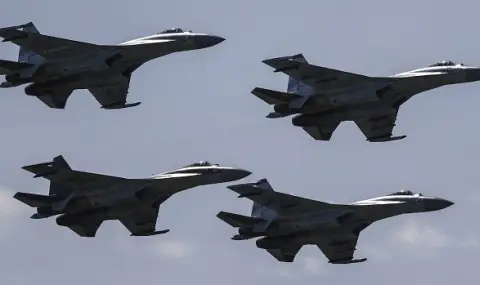In the last days of March, the Russian armed forces received the first batch of Su-35 fighters. Then the general director of the state-owned United Arms Corporation Vadim Badekha revealed that there are plans to accelerate the production of the aircraft. There are two main reasons for the expansion of the scale of production of the new Russian fighter, writes Military Watch Magazine.
"Our priority is to increase the production of Su-34, Su-35 and Su-57 aircraft... For each type, the production volume will be increased this year. "To support this, we will continue to expand our production capacity," said Vadim Badekha, with United Arms Corporation officials noting that the company is investing in workforce training and infrastructure modernization to eliminate bottlenecks and maintain higher production rates. The revelation comes as a surprise to aviation analysts because, while the expansion of the production scale of the Su-34 strike fighter and the Su-57 fifth-generation fighter has been confirmed, the Su-35 was previously expected to be phased out in the early 2030s, as the two heavier aircraft were considered more cost-effective. The Su-35's range and weapons carrying capacity are significantly lower than those of the Su-34, which can be produced at less than two-thirds the price of the Su-34, and its effectiveness in all roles is significantly lower than that of the Su-57, whether it is air defense suppression, air combat, or other missions.
The decision to expand the production of the Su-35 was likely motivated by two main factors. The first is the expansion of the Russian fighter fleet at a time of high defense spending and high tensions with NATO members, with the Ministry of Defense appearing to be satisfied with the performance of the Su-35 in the Ukrainian theater.
As of February 2022, the Su-35 has played a leading role in air-to-air operations in the Russo-Ukrainian war. One of the class's most notable successes occurred in March 2022, when the aircraft reportedly shot down four Ukrainian Air Force Su-27 fighters near the city of Zhytomyr in a single engagement. The Su-35 has not suffered any air-to-air losses, and additional losses have been achieved against aircraft including the Su-27, MiG-29, Su-24M, Su-25, Mi-8 helicopters, and a wide range of drone classes. This experience has led the Russian Air Force to to expand the use of the Su-35 for training.
Despite their successes, the Su-35 has proven to have much more limited beyond-visual-range targeting capabilities than the Russian MiG-31BM interceptors, largely due to the lack of sensors with a power comparable to that of the MiG's H007M.
The development of a new radar for the Su-35, based on the Su-57's H036 AESA radar, is widely reported but has not yet been confirmed. Expanded production of the Su-35 will allow the Russian Air Force not only to replace aging Cold War-era fighters such as the MiG-29 more quickly, but also to form new fighter units, the attractiveness of which is expected to be significantly higher if the fighters integrate newer sensors and armament.
The Russian army received the first batch of Su-35S fighters this year
Along with the growth in domestic demand for new fighters, the second factor that likely influenced the decision to expand production of the Su-35 is that over the past two years, export demand for fighters of this class has also grown significantly. After a series of reports from Algerian sources since September 2024 that the Algerian Air Force would purchase the Su-35, it was confirmed six months later that deliveries of the first of the aircraft had begun. The scale of the Algerian orders remains unknown, but is expected to remain at approximately two dozen fighters, as the majority of future fighter orders from Russia are expected to be for the more modern Su-57 fighters, deliveries of which are expected to begin before the end of the year.
In addition to Algeria, Iran has been reported to have placed orders for the Su-35 since mid-2022, with Islamic Revolutionary Guard Corps General Ali Shadmani confirming orders for the aircraft in January 2025. Iran's fleet of nearly 200 aging Vietnam War-era fighters leaves significant scope for the country to purchase the Su-35 on a significant scale, with planned orders for 64 or more aircraft reported.
The Iranian orders are likely the main factor leading to the expansion of the Su-35 program, and have the potential to transform the fighter from a relatively modest performer in export markets into a significant success, leading to foreign sales of over 100 fighters. The possibility of other customers for the fighter has also been raised, with geopolitical trends affecting Indonesia and North Korea fueling speculation that one of them could purchase the aircraft.
The relatively small size of the Russian Air Force and the simultaneous purchase of four separate classes of fighter aircraft make export demand crucial to the profitability of expanded Su-35 production.
The new pride of Russian combat aviation! Moscow expands production capacity of the new Su-35 fighter
The relatively small size of the Russian Air Force and the simultaneous purchase of four separate classes of fighters make export demand crucial to the profitability of expanded production of the Su-35
Apr 3, 2025 21:21 256
